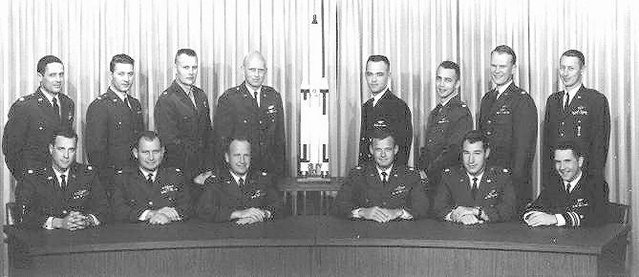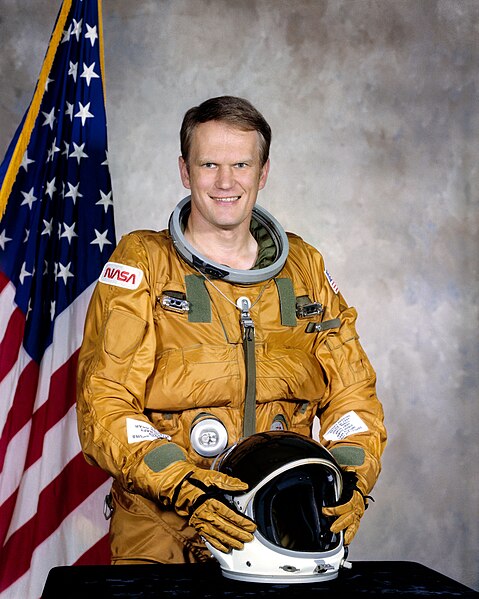NASA Astronaut Group 7 was a group of seven astronauts accepted by the National Aeronautics and Space Administration (NASA) on August 14, 1969. It was the last group to be selected during the Project Apollo era, and the first since the Mercury Seven in which all members were active-duty military personnel, and all made flights into space.
Group 7 astronauts. Left to right: Bobko, Fullerton, Hartsfield, Crippen, Peterson, Truly and Overmyer.
The fourteen remaining MOL astronauts in 1968. Back row, left to right: Robert T. Herres, Henry W. Hartsfield, Jr., Robert F. Overmyer, C. Gordon Fullerton, Robert L. Crippen, Donald H. Peterson, Karol J. Bobko and James A. Abrahamson. Front row, left top right: Lachlan Macleay, Richard E. Lawyer, James M. Taylor, Albert H. Crews, Francis G. Neubeck and Richard H. Truly. Absent: Michael J. Adams, John L. Finley and Robert H. Lawrence
The crews for the Space Shuttle Approach and Landing Tests (ALT). Left to right: Fullerton, Haise, Engle and Truly.
Image: Bobko
Manned Orbiting Laboratory
The Manned Orbiting Laboratory (MOL) was part of the United States Air Force (USAF) human spaceflight program in the 1960s. The project was developed from early USAF concepts of crewed space stations as reconnaissance satellites, and was a successor to the canceled Boeing X-20 Dyna-Soar military reconnaissance space plane. Plans for the MOL evolved into a single-use laboratory, for which crews would be launched on 30-day missions, and return to Earth using a Gemini B spacecraft derived from NASA's Gemini spacecraft and launched with the laboratory.
General Bernard Adolph Schriever, the director of the MOL program from 1962 to 1966
MOL patch
Major General Joseph S. Bleymaier, head of the MOL System Program Office (SPO)
Foot restraints were used to prevent the astronaut from floating away from the workstations. This technique was later adopted for the International Space Station (ISS).








